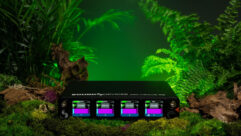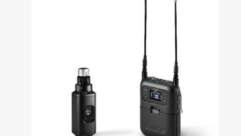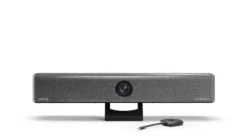Digital Signage Systems Use Wireless Communication to Go Mobile
With high gas prices here to stay, many expect that ridership will continue to grow. Interestingly, that creates digital signage opportunities?and not just via displays in transit stations, but also aboard trains, buses, and ferries, thanks to mobile wireless technologies.
CAPTIVE AUDIENCESPORTABLE RATHER THAN MOBILE
“The format, size, font, color, etc. are there at the player,” Collard says. “The only thing we send is ASCII characters that tell what the temperature is. So it’s not that bandwidth-intensive.”
If a good—or any—signal is unavailable when it’s time to download the large video files, or if it’s interrupted, the system continues to display the last successfully downloaded files. “You’ve got a fail-safe there so that if, for whatever reason, a transmission gets interrupted, you’re not losing anything, and the viewer doesn’t notice,” Collard says.
That perception of reliability is important because some passengers will view the signage’s performance as an indication of the train system’s health. “If the screen keeps blinking on and off, doesn’t it make you wonder about the maintenance on the trains?” Collard says. “So the reliability of these things has to be extremely high.”
Each day GO Transit carries more than 170,000 passengers, who ride an average of 35 minutes each way. The majority of riders are reportedly affluent professionals. That makes the GO Transit signage system an attractive vehicle for advertisers: reach a captive audience with a lot of time to kill and plenty of discretionary spending. The same could be said of other transit systems, which is why companies such as Omnivex see this market as a growth opportunity.
“UMBC has an arrangement where, as the trains are being manufactured, they rough in a lot of cabling before the train is delivered so they don’t have to retrofit them,” Collard says.
Another reason integrators can expect to see digital signage opportunities in transit systems is that municipal and transit authority budgets remain perpetually tight. As high fuel prices increase ridership, these groups need to add trains, buses, and ferries, all of which cost money. But in a sluggish economy, it’s difficult to raise taxes or fares—or both.
Digital signage can address that Catch-22 by providing a new revenue stream that helps pay for infrastructure. GO Transit and UMBC, for example, have a revenue-sharing agreement that divvies up the ad dollars generated by the in-train system.
And it can be a self-fulfilling proposition: mobile digital signage networks create an environment that encourages people to use the system regularly, even if gas prices plummet. For example, besides providing news, weather, and entertainment to pass the time, the system also can provide information about why the train has stopped between stations, instead of leaving passengers to wonder what’s going on.
Mass transit isn’t the only place where digital signage is going wireless. Some applications will be mobile wireless like GO Transit’s; others will be fixed or limited-motion wireless. For example, elevators in high-rise buildings can use wireless signage to provide advertising and information, such as the agenda for the next condo association meeting.
In these environments, the system could use cellular or Wi-Fi. The latter may be more attractive in certain situations because the airtime is free unless the traffic is routed over another party’s Wi-Fi infrastructure. Either way, it helps to have a basic understanding of how wireless signals propagate and how those variables need to be addressed in the signage system’s design.
In the case of cellular, it also helps to understand some industry trends. For example, wireless carriers increasingly are installing mini base stations, known as microcells and picocells, inside office buildings in order to improve coverage and thus attract and retain coveted business users. That trend helps signage applications that use cellular.
Wireless also can be a good fit for applications where the signage is moved every few weeks or months, such as mall kiosks and car dealerships. The common denominator is a facility where it’s expensive or impossible, for example, to bring in a scissor truck, string cables above ceiling tiles, or chisel a channel into a marble floor.
“Wireless is much more convenient for them, especially when you’re moving cars, because you can move the signage around with them without touching the floor or ceiling,” Collard says. “For that kind of installation, wireless very common.”
Contributing editor Tim Kridel is a freelance writer and analyst based in Columbia, Mo., who covers telecom and technology










